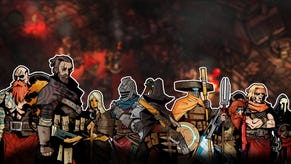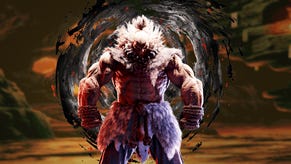H.E.R.O., a Run 'n Jump Atari Game (Minus Running 'n Jumping)
Is a platformer really a platformer without platforms?
This article first appeared on USgamer, a partner publication of VG247. Some content, such as this article, has been migrated to VG247 for posterity after USgamer's closure - but it has not been edited or further vetted by the VG247 team.
If, as I stated in yesterday's examination of Pitfall II: The Lost Caverns, the platformer genre really does center around controlling characters who run and jump, does a game in which the protagonist rarely runs and doesn't need to jump properly count?
Activision's H.E.R.O., designed by John Van Ryzin in 1984, brought a budding genre its first existential crisis. H.E.R.O's protagonist, Roderick Hero, didn't need to worry about such mundane matters as climbing ladders and avoiding falling damage; the man could fly. In fact, the game's acronymous title stood for "Helicopter Emergency Rescue Operation"; Roderick got about by way of a self-contained gyrocopter backpack. He could run along the ground, sure, but why bother when he could simply go by air instead?

H.E.R.O. brought a new dynamic to the platformer: The need to function in two dimensions. Despite being 2D games, platformers before H.E.R.O. only really operated on a single plane. Donkey Kong and Pitfall!, for example, incorporated ladders and pits as incidental hazards and forced you to jump or duck to avoid enemies -- but aside from those limited vertical movements, the action really existed on a horizontal planes. Donkey Kong Jr. switched it up, emphasizing the verticality of climbing vines, but in return the horizontal aspect of the game took a back seat (Junior was not much to control on the ground).
With H.E.R.O., on the other hand, players gained the ability to move freely in all directions. Moreover, threats appeared above or below Roderick at any given time; because he could fly at will, strictly ground-based enemies would have posed little threat. Thus obstacles and threats could appear at any position in the playing field, requiring deft maneuvering to dodge or destroy them.
Fittingly, H.E.R.O. didn't go with the standard side-scroller approach to level design; most of its action instead consisted of descent. Roderick's task was to fly down into a series of mine shafts in order to locate and rescue trapped miners. Enemies appeared along the way, and many passages were blocked off by walls. H.E.R.O.'s challenge came not only from the need to dodge bad guys -- per usual for the era, simply touching a foe, even something as innocuous as a tiny bat, would cost a life -- but also to determine the correct path through a stage.
Resource management played a key role in Roderick's quest, too. He entered each stage with a limited amount of power and dynamite; the latter could shatter certain walls, while the former would drop any time he took flight. Running out of either resource would render a stage essentially unbeatable, forcing players to sacrifice a life to start over. Most screens offered two paths forward, but only one was the "correct" path; the other would usually lead to either a monster obstructing the passage or else would throw too many obstructions into Roderick's way, forcing him to squander his dynamite. Adding to the difficulty was an early take on dynamic lighting similar to Elevator Action's: By damaging the lantern illuminating an area, you'd plunge the screen into darkness, forcing you to navigate by either memory or luck.

At the same time, Roderick wasn't entirely helpless. H.E.R.O. plays as much like a rudimentary shooter as it does a rudimentary platformer, and your helicopter apparatus can fire a thin laser beam from just below its propellers. This is sufficient to take out the creatures you meet en route, but it does require careful aim as the beam is narrow and the caverns' denizens move quite quickly. The game is somewhat easier on computer platforms than on the original Atari 2600 hardware, since their superior resolution gives a clearer view of the action. But the game remains entertaining on any platform -- not to mention challenging. The 20 different stages quickly increase in complexity and threat level, and if you somehow manage to reach the end you just start over in a much harder second cycle.
In its small way, H.E.R.O. helped liberate an entire genre from the surly bonds of gravity and the tyranny of jumping. And its legacy lives on today. Everything from Bionic Commando to Bangai-O owes a debt of gratitude to Activision's classic (if largely forgotten) platformer-that-wasn't.









